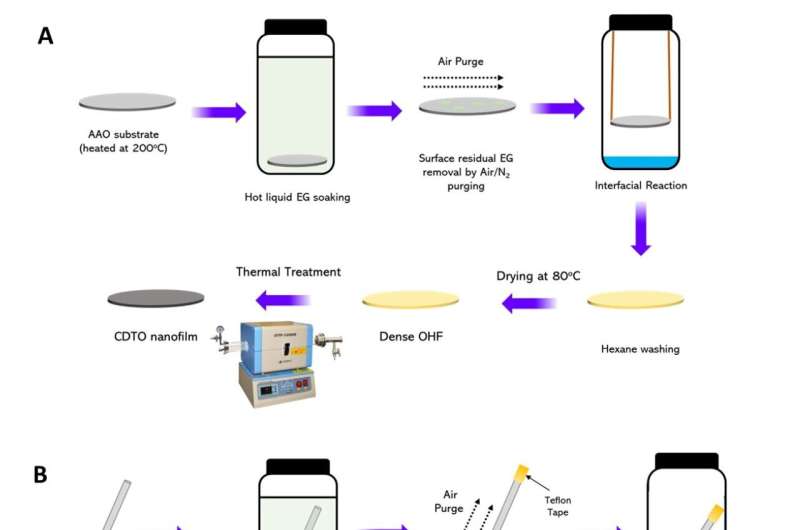This article has been reviewed according to Science X's editorial process and policies. Editors have highlighted the following attributes while ensuring the content's credibility:
fact-checked
peer-reviewed publication
trusted source
written by researcher(s)
proofread
Novel membrane could reduce energy expenditure in separating molecules for desalination, drug development

Separating molecules is critical to producing many essential products. For example, in petroleum refining, the hydrocarbons—chemical compounds composed of hydrogens and carbons—in crude oil are separated into gasoline, diesel and lubricants by sorting them based on their molecular size, shape and weight. In the pharmaceutical industry, the active ingredients in medications are purified by separating drug molecules from the enzymes, solutions and other components used to make them.
These separation processes take a substantial amount of energy, accounting for roughly half of U.S. industrial energy use. Traditionally, molecular separations have relied on methods that require intensive heating and cooling that make them very energy inefficient.
We are chemical and biological engineers. In our newly published research in Science, we designed a new type of membrane with nanopores that can quickly and precisely separate a diverse range of molecules under harsh industrial conditions.
Membrane technology
Membranes are physical barriers that can separate molecules in a mixture like a sieve based on their size or affinity—such as charge or polarity—to the membrane material. For example, your cells are surrounded by a membrane that transports nutrients into it and transports toxins out of it. Membrane technology include synthetic barriers that can separate molecules in industrially important mixtures at a lower energy cost than traditional methods.
Currently available membranes, including those used in large-scale seawater desalination, suffer from instability at high temperatures and when exposed to organic solvents—carbon-based chemicals that dissolve other substances. This has limited the use of membranes in many industrial separations.
Inorganic materials are more stable and better able to survive industrial conditions. Previous studies have focused on making inorganic membranes that are ultrathin in order to allow specific molecules to pass through. But thinness increases the likelihood of creating defects and pinholes in the membrane, and would be difficult to make on an industrial scale.
Improving membrane separation
We developed a technique to make a new inorganic material called carbon-doped metal oxide that can separate organic molecules smaller than one nanometer (for scale, a gold atom is a third of a nanometer in diameter).
Taking inspiration from an existing technology that manufacturers use to make semiconductors, called molecular layer deposition, we worked with two low-cost reactants from that process and generated thin films. These films contain nanopores that can be precisely tuned to control the separation of molecules ranging from 0.6 to 1.2 nanometers in diameter.
One of the key features of our membrane is that it can withstand harsh conditions. These membranes are stable up to 284° Fahrenheit (140° Celsius) and pressures up to 30 atmospheres (around 441 pounds per square inch) in the presence of organic solvents. This stability is critical, as many industrial separation processes can save tremendous amounts of energy when carried out under high temperatures.
As a demonstration, we used our membrane in the molecule separation step during the manufacture of the pesticide boscalid. By tailoring the pore sizes of our membranes to match the sizes of the molecules in the mixture, we were able to separate each individual component of reactant, product and catalyst.
Because of the stability of our membrane, we were able to carry out the whole process at 194°F (90°C), the temperature at which the reaction takes place, eliminating the need to reduce the temperature during the separation process. This can significantly reduce energy consumption and, in turn, reduce the carbon footprint of the industrial process.
We believe our membrane can be used in many similar industrial processes, including those involving harsh conditions where traditional membranes would fail, and are confident that it can be quickly scaled up. This can open the door for researchers and manufacturers to use membranes in previously unexplored applications.
More information: Bratin Sengupta et al, Carbon-doped metal oxide interfacial nanofilms for ultrafast and precise separation of molecules, Science (2023). DOI: 10.1126/science.adh2404
Journal information: Science
Provided by The Conversation
This article is republished from The Conversation under a Creative Commons license. Read the original article.![]()





















